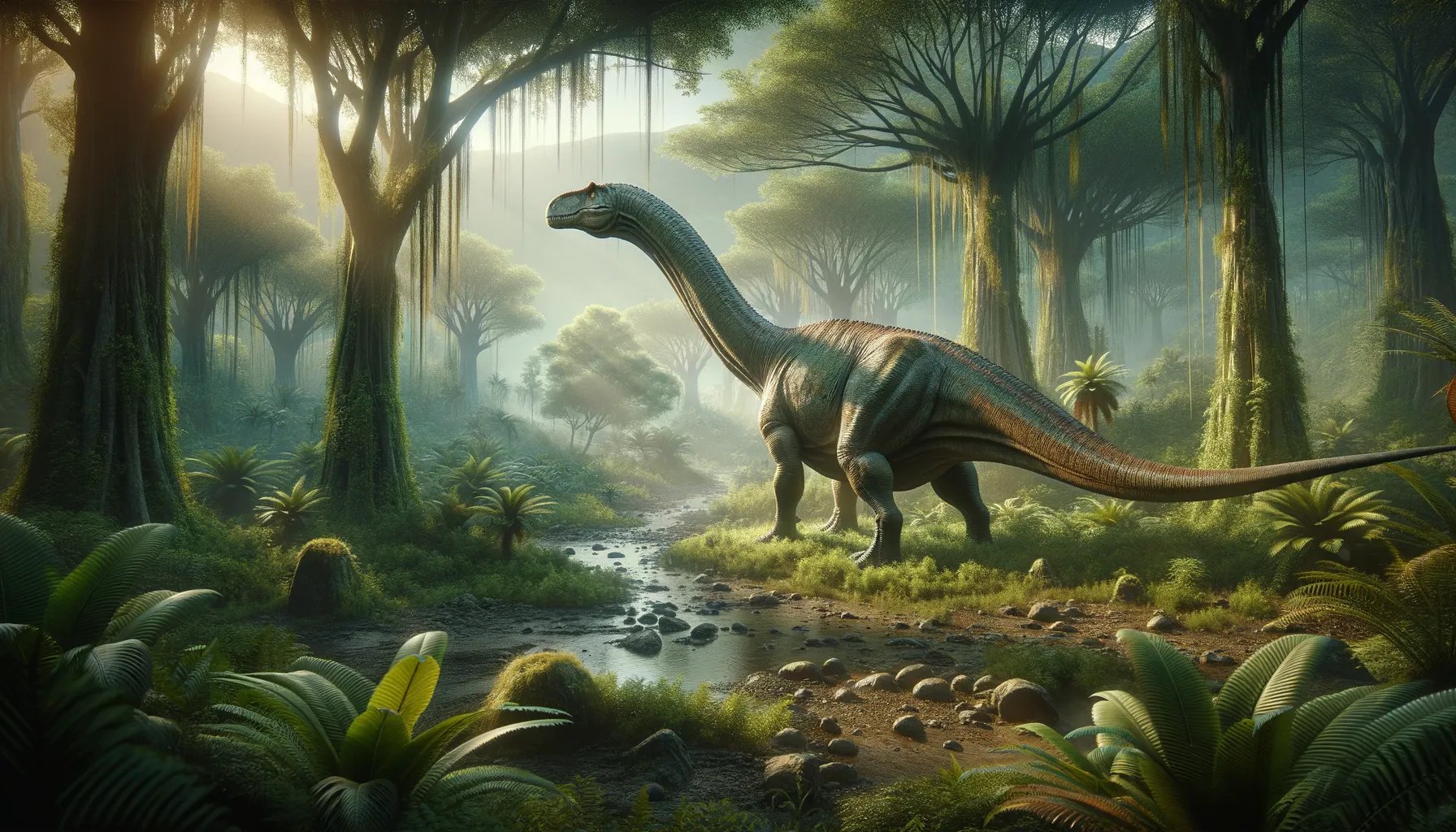
Abrosaurus
A gentle giant from the Jurassic era.
Period
Jurassic
Length
Roughly 9 to 10 meters long.
Height
Around 4.5 meters tall.
Weight
Approximately 4 to 6 tons.
Abrosaurus, a sauropod dinosaur from the Middle Jurassic period, roamed the forested regions of what is now China. Known for its gentle demeanor and long neck, it adapted well to grazing on high vegetation. Its physical structure is typical of sauropods, with a massive body and sturdy limbs, ideal for supporting its significant weight. The discovery of Abrosaurus has contributed greatly to understanding sauropod evolution in Asia.
Diet
Abrosaurus was a herbivore, feeding primarily on high-growing plant material. Its long neck allowed it to reach vegetation in trees, while its robust teeth were well-suited for stripping leaves.
Hunting
As a herbivore, Abrosaurus did not engage in hunting but instead spent much time foraging for plant matter. Its feeding habits were likely slow and deliberate, gathering food from a wide area to sustain its large body mass.
Environmental challenges
Abrosaurus faced environmental challenges such as fluctuating climate conditions that could have affected vegetation availability. The Jurassic period had periods of drought and heavy rain, influencing the growth cycle of its plant-based diet. Additionally, this sauropod had to navigate the presence of predatory theropods that roamed its habitat.
Speed
Likely slow-moving due to its large size.
Lifespan
Estimated to live several decades.
First discovery
Discovered in the Dashanpu Formation in China in 1986.
Fun Facts
- Abrosaurus lived during the Middle Jurassic period, around 170 million years ago.
- The name 'Abrosaurus' means 'delicate lizard', referencing its light skull structure.
- Abrosaurus was a sauropod dinosaur, which means it was a long-necked, herbivorous creature.
- Its fossils were first discovered in China, specifically in the Dashanpu Quarry in Sichuan Province.
- Abrosaurus had a unique boxy skull, distinguished by large openings, making it different from other sauropods.
- This dinosaur likely grew to around 30 feet long, making it relatively small compared to its giant sauropod relatives.
- Abrosaurus used its long neck to reach vegetation high in the trees, similar to how a giraffe feeds today.
Growth and Development
Like many sauropods, Abrosaurus experienced rapid growth after hatching, reaching substantial size relatively quickly. Its development included a progressive elongation of the neck and expansion of its body mass. These features were vital for its ability to reach food and protect against predators.
Habitat
Abrosaurus inhabited lush, forested areas rich with ferns and conifers, typical of the Middle Jurassic environment. This dinosaur flourished in regions with abundant plant life, providing ample food resources. The presence of large water bodies could also have been an important aspect of its habitat, aiding in its survival.
Interaction with other species
Abrosaurus coexisted with various dinosaur species, including other plant-eaters and carnivorous predators. Its size offered some protection against smaller predators, but it likely needed to remain vigilant against larger theropods. Social grouping with other Abrosaurus individuals might have provided mutual protection and enhanced survival.
Natural lifespan
Abrosaurus likely had a natural lifespan of up to 70 or more years.
Reproduction
Abrosaurus, like other sauropods, reproduced through laying eggs. These eggs were deposited in nesting sites, often shared by groups for protection. After laying, it’s likely the adult dinosaurs left the young ones to hatch and fend for themselves.
Social behaviour
Sauropods such as Abrosaurus are believed to have been social animals, possibly forming groups for migration and communal protection. These social structures may have included varying age classes, with juveniles staying close to adults for safety.
Fossil locations
The primary fossil remains of Abrosaurus have been found in the Dashanpu Formation, in Sichuan, China. This region is renowned for its well-preserved Jurassic dinosaur fossils, providing crucial insights into the dinosaur communities of that era.
